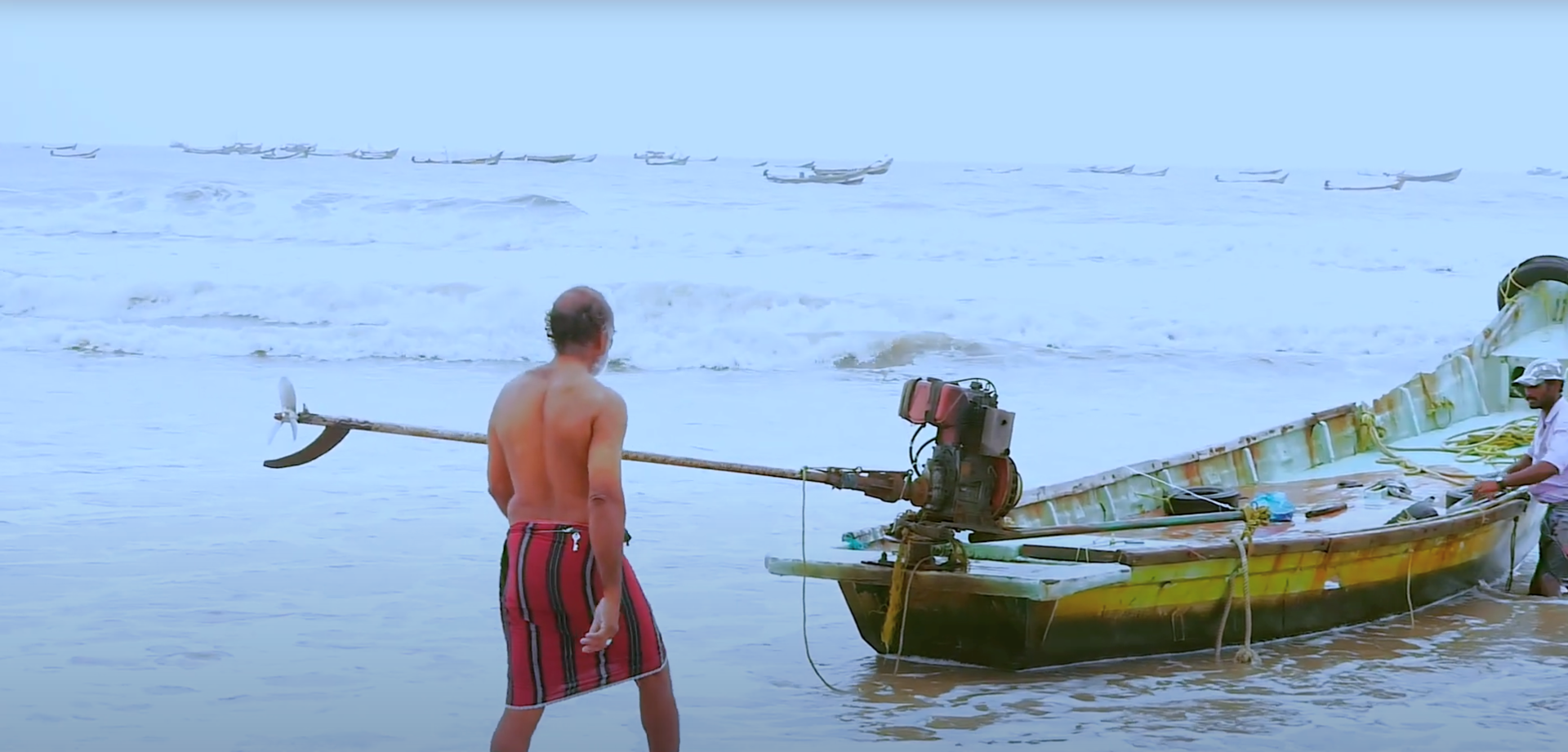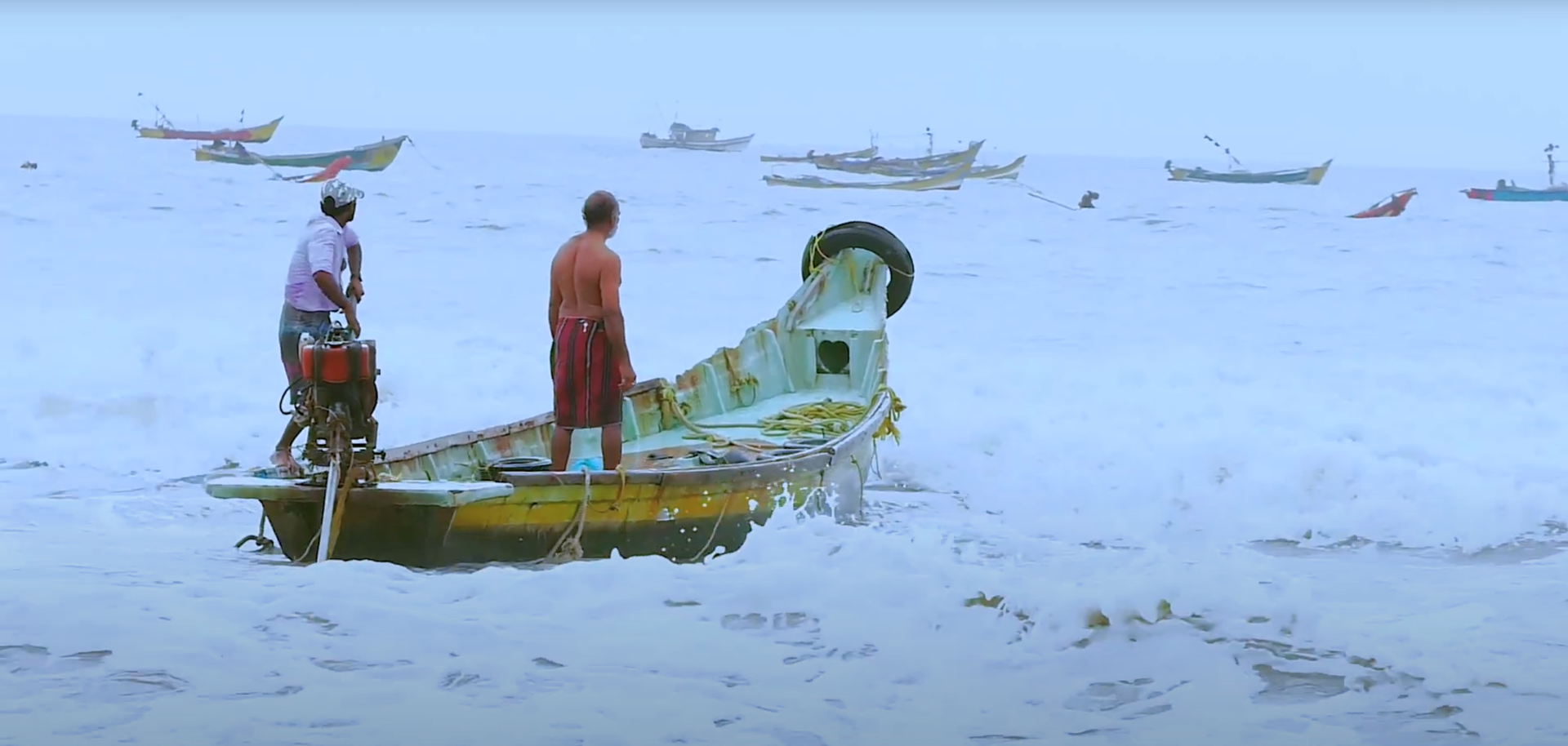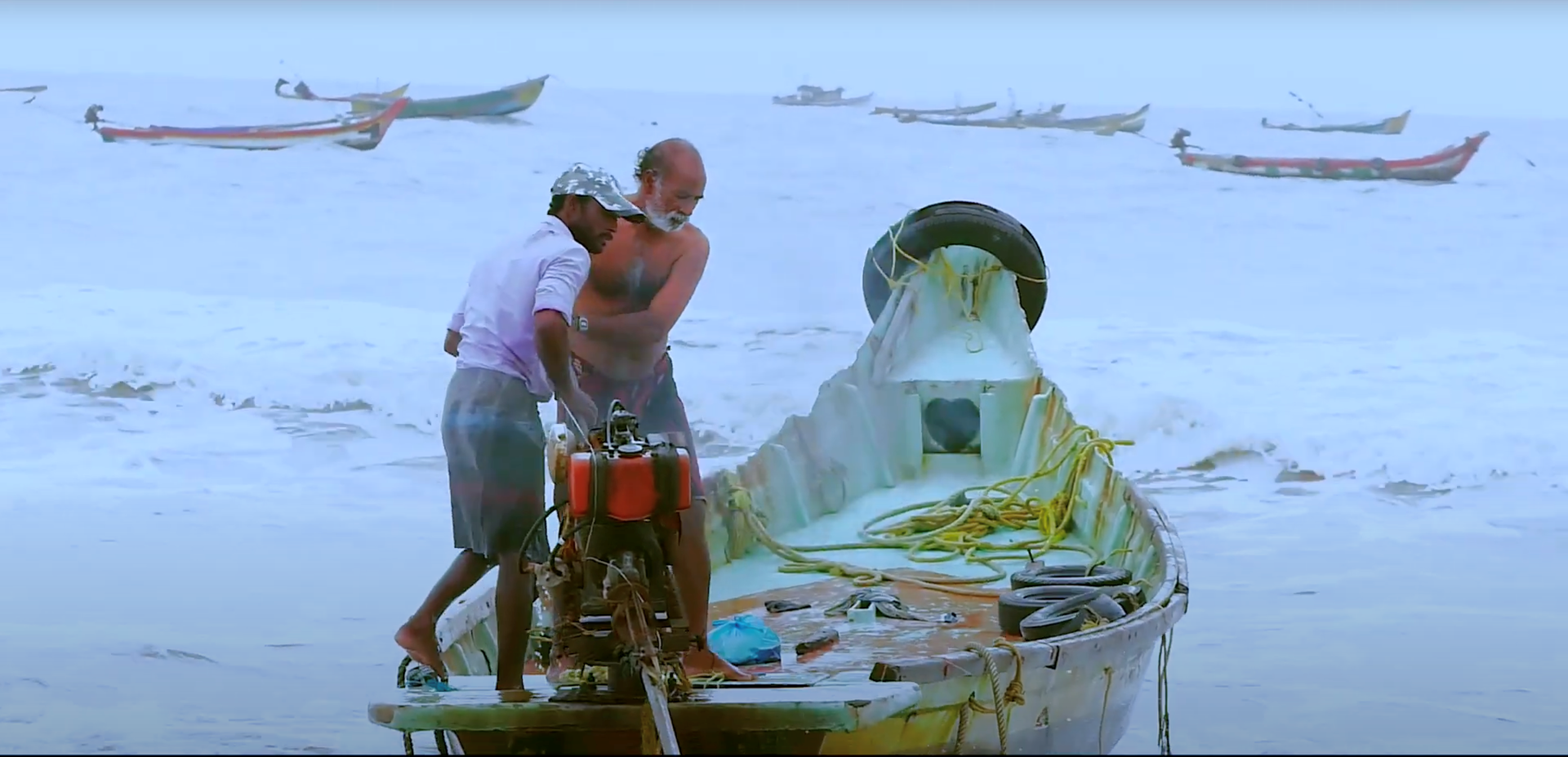For most people in coastal India’s fishing communities, the sea is not just their livelihood but a way of life. Fishing shapes their identity, feeds their families, and binds communities together.
Days are spent away at sea, far from the shore, exposed to harsh weather, physical hazards, and long hours with little rest. At sea, vision is everything! It guides them to read the waves, spot the catch, navigate changing weather, and avoid danger.
Studies in Andhra Pradesh and Tamil Nadu show that 20–30% of fishermen over the age of 40 live with significant visual impairment, and 7% are blind in one or both eyes.

In an occupation where poor vision can mean a missed catch, accidents, or even death, the stakes are high—not just for individuals, but for the food security of families and resilience of entire communities.
Apparao is a fisherman from Chirala village in the Bapatla district of coastal Andhra Pradesh. Beyond 30 kilometers in the waters, where networks die down and the horizons hold untold realities, vision was his only compass and safeguard.
However, when his vision started to become cloudy and distorted, he had to stop fishing. ‘I didn’t know what else I could do,’ he said. The uncertainty wasn't just physical but also economic, emotional, and social, as it affected his livelihood and his purpose in life.
Our eyes have a natural lens that sits behind the iris and helps focus light onto the retina. When this lens turns cloudy (due to cataract), less light reaches the retina and the brain receives poor visual signals, leading to blurry or dim vision.
Relief came when the L V Prasad Eye Institute (LVPEI) held a community eye screening at his local panchayat office, one of the thousands conducted regularly across the most underserved regions of Andhra Pradesh, Telangana, Odisha, and Karnataka.

Apparao was referred to the Venkata Lakshmi Eye Centre in Karamchedu for cataract surgery, which involves removing the clouded lens and replacing it with an artificial intraocular lens (IOL) that will focus light onto the retina, like a healthy, natural lens would.
It is one of the secondary eye care centers that form the center of the LVPEI pyramidal model —a a bottom-up model that makes expert eye care accessible to the underserved, irrespective of their ability to pay, without compromising on the quality of care provided.

The LVPEI eye care pyramidal model comprises 278+ vision centres (permanent primary eye care centres that serve a population of 50 000+) 28 secondary eye care centres, 4 tertiary eye care centres and one quaternary eye care institute, an institute of excellence at the top.
With his eyesight restored at no cost, Apparao returned to the sea and to his life at sea with renewed clarity and confidence. However, his journey didn’t end there.
Considering how health issues often go unspoken and untreated in his community, he began sharing his experience with others, encouraging them to seek help, guiding them to the nearest vision center, and quelling myths & fears around cataract surgery.
Today, he’s not just out fishing again but is helping others see a future he himself was uncertain of at a point in time.
Cataract is cloudiness in the lens of the eye, leading to increasingly blurred vision. It is the leading cause of blindness globally, impacting 94 million people worldwide. Vision loss due to cataract can be restored overnight with a simple and cost-effective surgery. In adults, the risk of developing cataract increases with age, but other factors can accelerate their development. In children, they can be congenital (present at birth) or develop later, often due to genetic factors, infections, or other underlying conditions. While cataracts may not be entirely preventable, there are lifestyle changes and habits that can be adopted to reduce the risk and delay their onset.
After cataract surgery, eyeglasses often remain important for optimizing vision. They provide a safe, non-invasive way to fine-tune sight and correct any remaining refractive error. Many people still need eyeglasses for near tasks such as reading or other near work. A check for new eyeglasses is usually recommended once the eye has healed and vision has stabilized, typically a few weeks after surgery.
This story was developed by L V Prasad Eye Institute (LVPEI), a member of the Global SPECS Network, in collaboration with the WHO Vision and Eye Care Programme.
Photo credits: Mr Venkatesh Vengal Das and Mr Praveen Kumar Vayya
